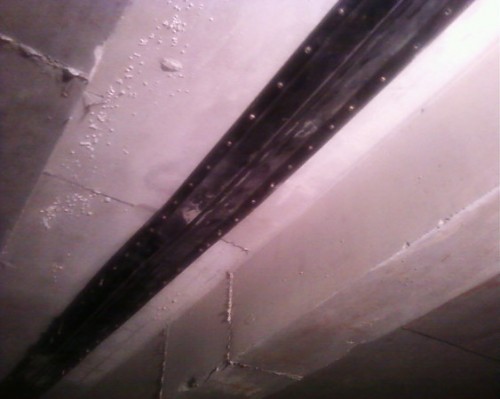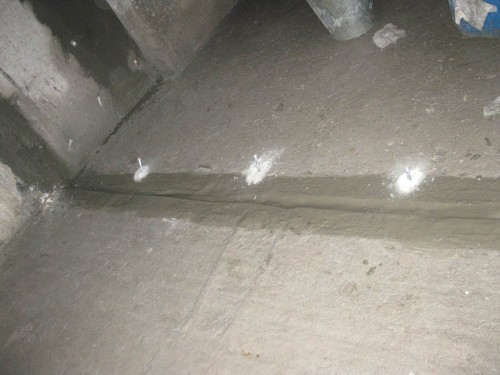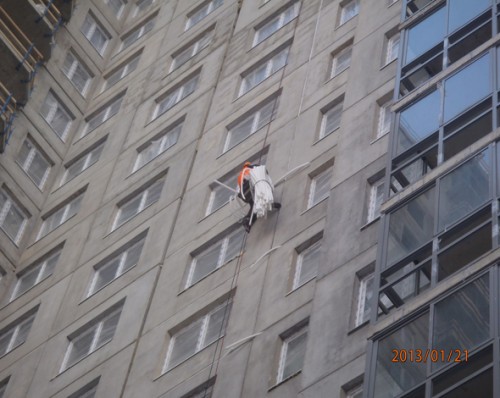The construction of any structure is not complete without construction seams. Such joints are a “weak place”, i.e. They can pass moisture and air flows. In order to avoid these phenomena and waterproofing of construction joints is provided.
Content
This is a number of measures aimed at making the structure waterproof. This process is simply indispensable for the construction of pools and other tanks, as well as buried structures. Of great importance is waterproofing in the construction of residential and industrial buildings.
Today, waterproofing is carried out by various methods depending on the determining conditions.
Factors that should be taken into account when choosing a method of waterproofing seams of building structures
- The type of seam by the degree of mobility (mobile and motionless).
- The value of the estimated load.
- The frequency of exposure.
- The presence or absence of the influence of aggressive chemicals.
- The maximum and minimum value of the temperature and the scale of its changes.
- The moisture content of the soils on which the structure is located.
- The location of the seam and its availability.
- The structure of the structure and the quality of construction raw materials.
- The nature of the work (creation of a fresh seam or its reconstruction).
- The desired characteristics (aesthetics, water resistance, increased service life, etc.).
- The budget of the event and the terms of its implementation.
Waterproofing protection of joints of concrete, brick and stone structures
The main methods and elements for the waterproofing of construction seams
1. Using swelling cords.
Such seams are of various origin:
- acrylate;
- bentonite;
- from hydrophilic rubber.
Advantages
- simplicity of installation;
- suitable for processing communication inputs and concreting seams;
- they are applicable both for the installation of tanks and for the insulation of buried structures;
- perfectly operated in conditions of constant humidity.
Flaws
- the need to comply with the minimum time period between laying the cord in the seam and its subsequent concreting;
- suitable only for sealing fresh seams of a new building;
- are not used to process deformation seams;
- with complete drying, the cords decrease in volume;
- do not like hard and salt water, as well as temperatures below 0 ° C;
- bentonite clay cords are not designed for high pressure;
- the thickness of the walls of structures in which these cords can be used is strictly limited (up to 20 cm).
2. Using a key (profiles) during concreting.
Advantages
- maintain high pressure;
- apply both in the construction of new buildings, and in the processing of deformation seams with displacements;
- a wide selection of various options.
Flaws
- it is difficult to process the seams of ready -made structures (but possible!);
- with increased water pressure, small leaks can occur.
3. The use of tapes and profiles that are attached to the already finished structure (using glue or clamps).
Advantages
- well proven themselves in conditions of clamping of water;
- allow you to get a perfectly waterproof seam;
- they can be used for a small thickness of the walls of building structures.
Flaws
- for high -quality installation, it is necessary to eliminate the flow of water for the time of insulation;
- ribbons cannot be glued on the outside of the tanks and on the inside of the buried structures;
- the gluing surface must be carefully prepared;
- complex installation process.
4. The injection of polymer hardening resins into the seam cavity, such as:
- acrylic;
- polyurethane;
- epoxy.
Advantages
- the possibility of achieving a high degree of water resistance of seams;
- universality (suitable for both repair and work with new structures; both for tanks and for buried structures);
- it does not require stopping the flow of water during the installation period.
Flaws
- the method in pure form is not suitable for processing deformation seams;
- there is a restriction on the thickness of the walls of structures.
This process is often carried out using installation at the stage of construction of special injects.
5. Casting with rigid mixtures (unsaturated or expanding), such as cement.
Advantages
- universality (suitable for the repair of old seams, and for the processing of new building joints; both for reservoirs and for buried structures).
Flaws
- not suitable for mobile seams.
6. The use of elastic polymer sealants.
Advantages
- sealing seams with a changing section and irregular contours is possible.
Flaws
- it is not suitable for use for high water pressure in wide seams;
- sea sealants do not withstand constant contact with water.
But, it should be noted that none of the above elements is used for waterproofing, as an independent agent. Almost always more appropriate use of a complex of several such components. The effectiveness of such a complex depends on the correct selection of tools and materials for waterproofing, taking into account the goals and operating conditions. It is impossible to recommend the only universal combination because the initial data is always different. And, therefore, the solution to the problem must be approached individually. You just need to take into account the technical characteristics of each method of waterproofing and the features of the arranged seams.
DIY waterproofing
How to make waterproofing interpanel sutures
- Clean the seam of garbage, residues of building materials or traces of old insulation (in case of repair).
- Carefully process the insides of the seam with a water -repellent primer to improve the adhesive characteristics of the surface.
- Wait for complete drying.
- Treat the seam by building foam or isolate them using other polyethylene gaskets.
- Apply a sealant or mastic over the seam using a spatula or gun. At the same time, make sure that the seam is concave, not convex.
- In case of work with outer seams, a protective tape is glued.
How to waterproof deformation seams
The purpose of such seams is a decrease in exposure to temperature changes and manifestations of seismic activity. For waterproofing such seams, crushed stone and bitumen are traditionally used.
- Carry out such waterproofing in the dry season.
- Before starting work, hang the walls as much as possible in the joints.
- Pour dry crushed stone into the seam with a thin layer.
- Pour bitumen on top of crushed stone so as to fill all the voids.
- Repeat the last two manipulations until the seam is completely filled.
Today, the latest gel -forming materials have already become widespread. They settly protect from moisture from the entry of moisture even if the condition of the “suture of the suture” is not fulfilled.















